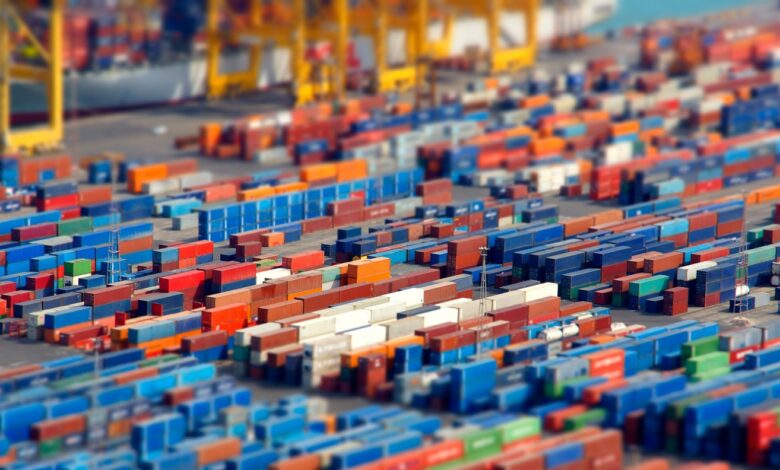Picture walking into your local market or browsing an online shop. You pick up a chocolate bar, a new smartphone, or a trendy jacket. But do you know where these products actually come from? As a consumer, you might wonder about the origins of what you buy—the country of manufacture, the working conditions, and the environmental impact. This curiosity is not just a passing thought; it’s now recognized as an essential right for consumers around the world.
Today, understanding your rights to know where products come from is more important than ever. Informed consumers make better decisions for themselves, their families, and the planet. In this article, we’ll explore why product origin transparency matters, what your legal rights are, how companies disclose information, and how you can demand greater transparency in your everyday purchases.
Why Does Product Origin Matter?
Knowing the origin of products goes far beyond geography. It touches every aspect of our globalized world, from ethical sourcing and fair trade to safety standards and environmental responsibility.
- Consumer Safety: Products from certain regions may adhere to stricter safety regulations, giving you peace of mind.
- Ethical Concerns: Child labor, unsafe working conditions, and unfair wages are global issues. By knowing where your purchases originate, you can avoid supporting unethical practices.
- Environmental Impact: Some places have stronger environmental protections than others. Product transparency helps you choose greener, more sustainable options.
- Supporting Local Economies: Clear labeling means you can intentionally support local farmers, artisans, or homegrown brands when you shop.
When you know where things come from, you make empowered choices that align with your values and priorities.
Your Legal Rights: Product Origin Disclosure Laws
With globalization, governments around the world have established laws to protect your right to know where products come from. Let’s break down how these rules work in TIER-1 countries.
United States
In the United States, federal laws mandate clear country-of-origin labeling (COOL) for many products. The Tariff Act, for example, requires imported goods to be marked with their country of manufacture. The U.S. Department of Agriculture adds extra requirements for food, especially beef, pork, fruits, vegetables, and fish.
European Union
The European Union has strong consumer rights regulations. Many foods and manufactured products must be labeled with their country of origin or place of provenance. Shoppers in the EU also benefit from strict rules against misleading origin claims.
Australia, Canada, United Kingdom
These countries also enforce robust labeling laws. In Australia, for instance, consumers benefit from the Australian Consumer Law, which requires truthful country-of-origin claims. Canada mandates bilingual product labels showing origin, especially for food items. The UK, after Brexit, introduced similar but independent laws to ensure consumer clarity.
Beyond Legal Obligations
It’s important to note that laws set the minimum standard. Many companies go further, volunteering extra details about their supply chain, manufacturing processes, and sourcing. Brands recognize that trust is a competitive advantage in today’s conscious market.
How Can You Find Out Where a Product Comes From?
It’s your right to ask and get truthful answers about product origins. But how do companies disclose this information?
Labels and Packaging
Start with the product label. Look for “Made in,” “Product of,” or similar country-of-origin statements. Logos or certifications—like “Fair Trade Certified” or “Rainforest Alliance”—offer more Than geography by confirming standards of ethical or environmental responsibility.
Digital Tools and QR Codes
Modern technology has made supply-chain transparency easier. Many brands now use QR codes, blockchain, or dedicated websites so shoppers can trace a product’s journey from raw material to finished good.
Company Policies and Reports
Forward-thinking businesses post supplier lists, sustainability reports, and even interactive maps online. Look for these disclosures before you buy.
Ask the Seller
Never hesitate to ask! Ethical retailers are happy to share origin details or direct you to resources.
The Role of Consumer Demand in Driving Transparency
Consumer demand is a powerful force. When enough people want to know where their purchases come from, companies will respond.
- Social Media Campaigns: Viral hashtags such as #WhoMadeMyClothes and annual events like Fashion Revolution Week have forced big brands to reveal their production practices.
- Product Boycotts: When reports emerged about unethical practices in manufacturing—such as sweatshop labor or environmental disasters—consumers voted with their wallets, often resulting in major changes.
- Certification Programs: Programs like Fair Trade or organic certification require strict supply chain audits, providing consumers with trustworthy information.
Your questions and choices matter. Each time you ask about a product’s origin or choose transparent brands, you help set a higher standard for the entire marketplace.
Challenges and Loopholes in Origin Disclosure
Despite significant progress, challenges remain.
- Complex Supply Chains: Global supply chains can involve multiple countries and layers, making it difficult to pinpoint origin.
- Ambiguous Labels: Terms like “assembled in,” “packed in,” or mixed-origin labels can be confusing. Always read the fine print.
- Limited Legal Scope: Not all products are covered by origin disclosure laws, especially complex goods like electronics with global components.
- Greenwashing: Some firms exaggerate or misrepresent their sourcing practices to appear more ethical than they really are.
The best defense is staying informed and advocating for stronger standards and clearer labels in your jurisdiction.
Why Transparent Supply Chains Benefit Everyone
Transparent supply chains are not just a win for consumers; they benefit everyone involved.
- Brands: Companies that embrace transparency win greater customer trust, loyalty, and positive word of mouth.
- Workers: When supply chains are exposed, there is less room for exploitation, leading to better jobs and fairer practices.
- The Planet: Transparency increases accountability, reducing environmental harm by shining a light on unsustainable practices.
- Society: Open information helps build a fairer, more just global economy.
Transparency is becoming the new normal for responsible businesses. The market increasingly rewards brands that are honest and open about product origins.
How You Can Exercise Your Right to Know
Everyone can take steps to make origin transparency a reality:
- Check Labels: Always read product labels for origin statements and reputable certification marks.
- Use Verification Tools: Scan QR codes or explore company transparency portals to dig deeper into product histories.
- Ask Questions: Don’t be shy—email, message, or call companies if the information isn’t clear. Your curiosity makes a difference.
- Support Ethical Brands: Reward brands with transparent practices by making them your first choice.
- Join Campaigns: Participate in awareness drives encouraging companies and governments to strengthen disclosure laws.
Active consumers shape the future of commerce. Every question you ask is a vote for transparency.
The Future of Origin Transparency
Looking forward, advances in technology and growing consumer demand will continue to refine supply chain transparency.
- Blockchain: Immutable digital ledgers can securely track goods at each supply-chain stage.
- Smart Packaging: Dynamic QR codes will someday let you see live sourcing updates or environmental impacts.
- Innovation: AI and remote sensing may help monitor compliance and catch fraud faster than ever before.
As laws evolve and technologies mature, clear and accessible origin information will become a baseline expectation for all shoppers.
Conclusion
Your right to know where products come from is fundamental in today’s connected, responsible marketplace. Product origin transparency empowers you to make choices that reflect your ethics, support sustainable trade, and reduce environmental harm. Remember, your decisions ripple across global supply chains. By embracing your right to know and demanding transparency, you help build a world where informed choices drive positive change for people and the planet.
Ready to take action?
Start by checking your next purchase for clear origin labels or certifications. Ask questions, explore digital tools, and let brands know you value transparency. Together, we can make transparent supply chains the global standard.






